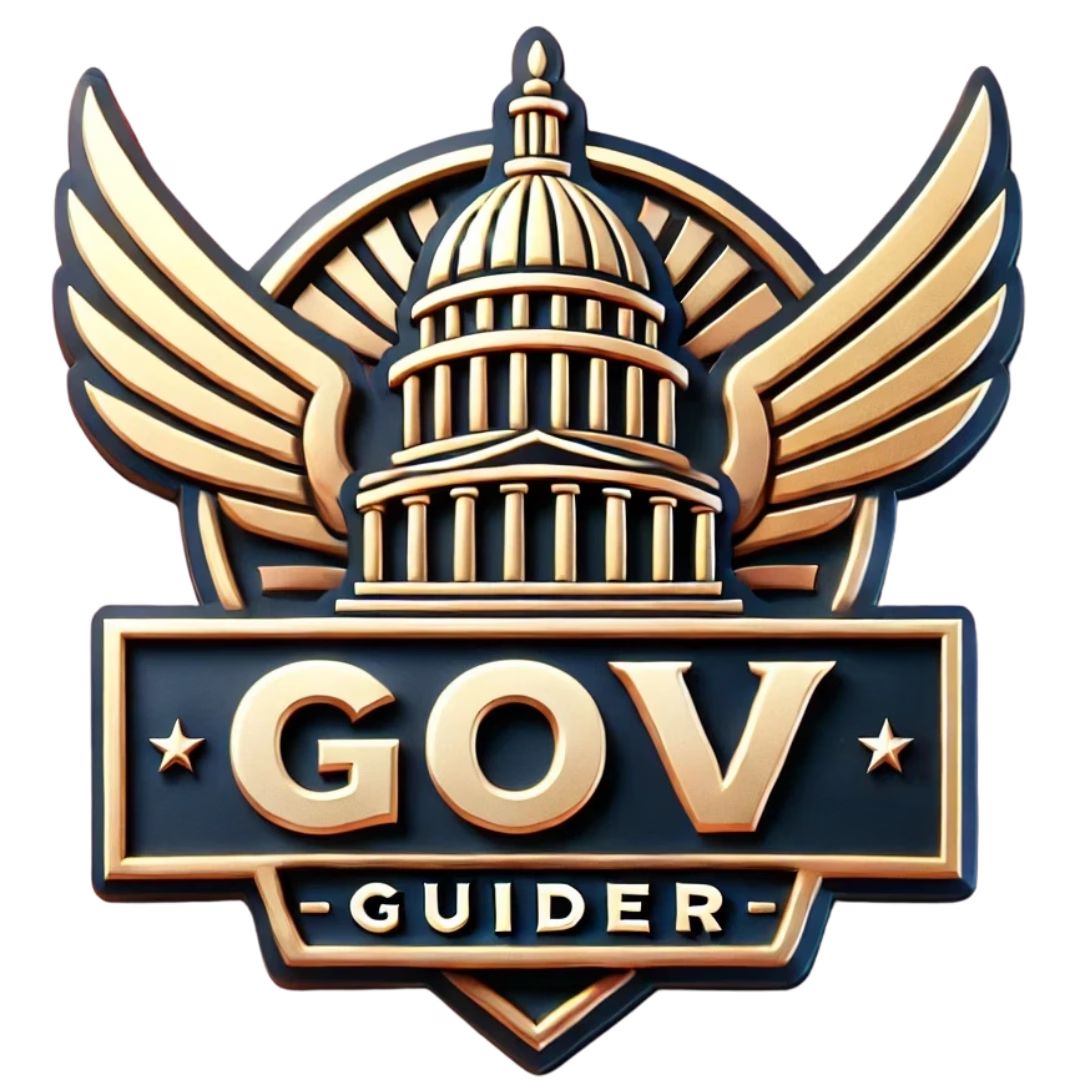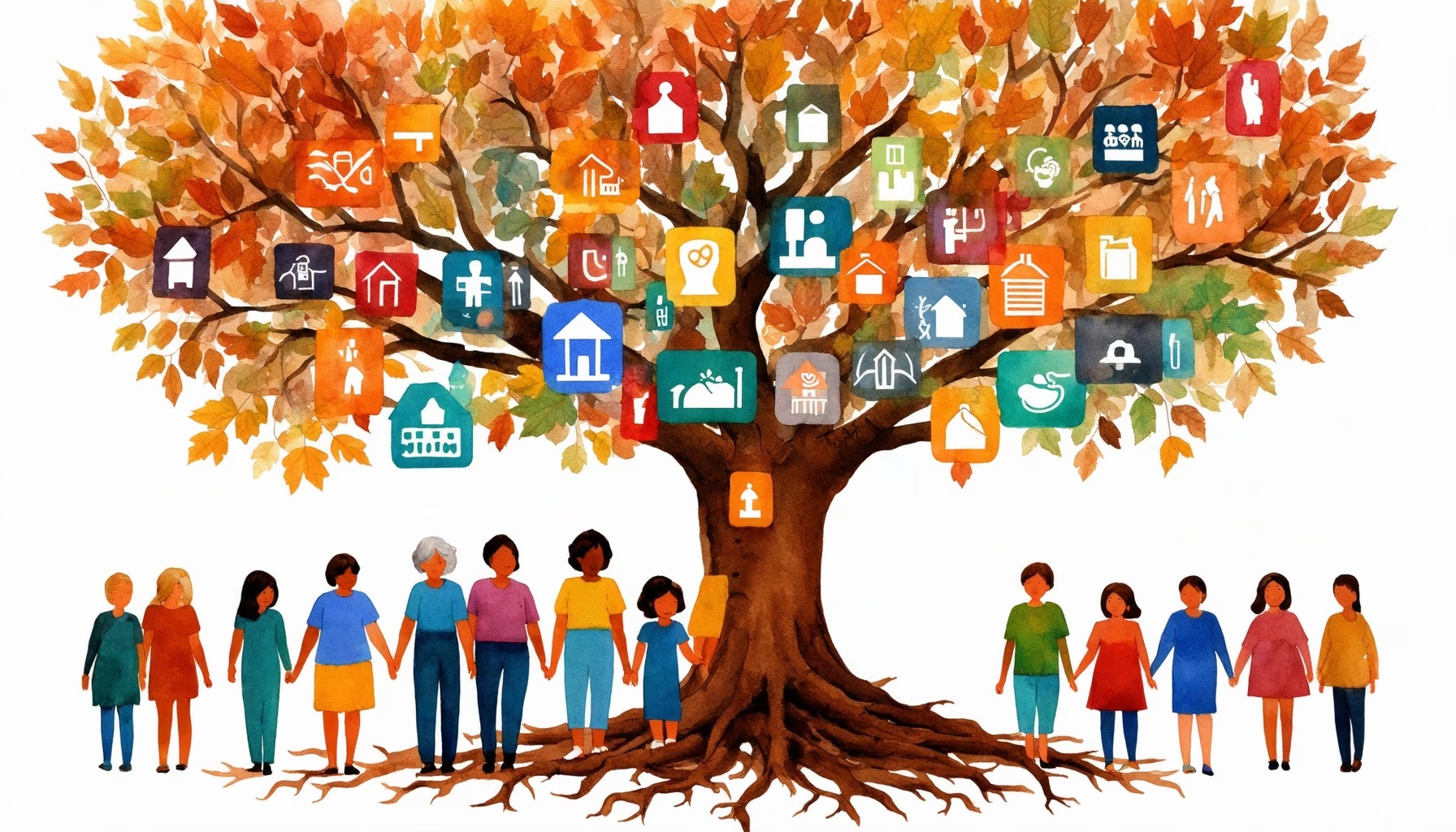Key Takeaways
- Explore a variety of free government programs for low income individuals and families, providing essential financial support and resources.
- Key programs include TANF for cash assistance, SNAP for food aid, and Medicaid for healthcare coverage.
- Learn how Supplemental Security Income (SSI) assists individuals with disabilities and the elderly to meet basic needs.
- Access utility assistance through the Low-Income Home Energy Assistance Program (LIHEAP) to manage heating and cooling costs.
- Understand eligibility criteria and application processes to maximize benefits from various government assistance programs.
In today’s challenging economic landscape, understanding free government programs for low income individuals and families is more crucial than ever. This comprehensive guide will explore the various government assistance programs available to help those in need navigate financial hardships. From an overview of major assistance programs that significantly impact low-income families to state-specific resources like the low-income home energy assistance program, we will delve into the support systems designed to alleviate financial strain. Additionally, we will address pressing questions such as what free resources you can access, how to qualify for financial assistance, and the most funded programs that provide essential aid. Whether you’re seeking financial assistance due to unemployment or looking for programs that help low-income families thrive, this article will equip you with the knowledge and tools necessary to access the help you deserve.
Overview of Major Government Assistance Programs
In the United States, several government assistance programs play a crucial role in supporting low-income individuals and families. These programs are designed to provide financial aid, resources, and services that help alleviate poverty and promote self-sufficiency. Understanding these programs can empower individuals to access the help they need. The three biggest programs that assist low-income individuals and families in the United States are:
- Temporary Assistance for Needy Families (TANF): TANF provides financial assistance and support services to low-income families with children. The program aims to help families achieve self-sufficiency through job preparation, work, and marriage. States have flexibility in designing their TANF programs, which may include cash assistance, childcare support, and job training services. According to the U.S. Department of Health and Human Services, TANF has helped millions of families transition from welfare to work (HHS, 2022).
- Supplemental Security Income (SSI): SSI is a federal program that offers financial assistance to individuals with disabilities, the elderly, and those who are blind, who have limited income and resources. This program ensures that recipients have a minimum level of income to meet their basic needs for food, clothing, and shelter. As of 2023, the maximum federal SSI payment is $914 per month for individuals and $1,371 for couples (Social Security Administration, 2023).
- Earned Income Tax Credit (EITC): The EITC is a refundable tax credit designed to support low-to-moderate-income working individuals and families, particularly those with children. The credit reduces the amount of tax owed and may result in a refund, effectively increasing the income of eligible workers. In 2022, the EITC lifted approximately 5.6 million people out of poverty, according to the IRS (IRS, 2022).
For additional resources and information on these programs, individuals can visit Benefits.gov, which provides comprehensive details on eligibility and application processes.
How These Programs Impact Low-Income Families
The impact of government assistance programs on low-income families is profound and multifaceted. These programs not only provide immediate financial relief but also foster long-term stability and growth. Here are some key ways these programs benefit families:
- Financial Stability: Programs like TANF and SSI ensure that families have a steady income, which is essential for meeting basic needs such as food, housing, and healthcare. This financial support helps families avoid homelessness and food insecurity.
- Access to Resources: Many government assistance programs offer additional resources, such as job training and childcare support, which can help parents secure stable employment. This access to resources is crucial for breaking the cycle of poverty.
- Improved Quality of Life: By alleviating financial stress, these programs contribute to better mental and physical health outcomes for low-income families. Families can focus on education and personal development, leading to improved life circumstances over time.
Understanding the benefits and availability of these programs can empower families to seek the assistance they need. For more information on financial assistance programs, visit Gov Guider.

Free Government Programs for Low Income: An Overview
Government benefits and assistance programs offer a variety of free resources to eligible individuals and families. Here’s a comprehensive overview of what you can access:
- Food Assistance: Programs like the Supplemental Nutrition Assistance Program (SNAP) provide financial assistance for purchasing food. According to the USDA, SNAP helps millions of Americans afford nutritious food.
- Health Insurance: The Affordable Care Act (ACA) offers free or low-cost health insurance options through Medicaid and the Children’s Health Insurance Program (CHIP). These programs are designed to ensure that low-income families have access to necessary healthcare services.
- Housing Assistance: The U.S. Department of Housing and Urban Development (HUD) provides various programs, including public housing and housing choice vouchers, to help individuals and families secure affordable housing.
- Utility Bill Assistance: The Low Income Home Energy Assistance Program (LIHEAP) helps eligible households pay for heating and cooling costs, ensuring that families can maintain a safe living environment.
- Welfare and Financial Assistance: Temporary Assistance for Needy Families (TANF) offers financial support to low-income families with children, helping them achieve self-sufficiency.
- Social Security Benefits: Social Security provides financial assistance to retirees, disabled individuals, and survivors of deceased workers. This program is crucial for many Americans in need of financial support.
- Government Checks and Payments: Various government programs, including unemployment benefits and stimulus checks, provide direct financial assistance to eligible individuals during times of need.
For more detailed information on these programs and to check eligibility, visit Benefits.gov or consult local government resources.
Government Cash Assistance Programs Available
Cash assistance programs are vital for low-income families seeking immediate financial relief. Here are some key programs that provide cash aid:
- Temporary Assistance for Needy Families (TANF): This program provides cash assistance to low-income families with children, helping them cover essential living expenses.
- Supplemental Security Income (SSI): SSI offers financial support to individuals with disabilities and low income, ensuring they can meet basic needs.
- Unemployment Insurance: For those who have lost their jobs, unemployment benefits provide temporary financial assistance while they seek new employment opportunities.
- Emergency Cash Assistance: Various state programs offer emergency cash assistance to families facing unexpected financial crises, helping them stabilize their situation.
These programs are designed to provide immediate financial help and support to those in need. To learn more about eligibility and application processes, visit Gov Guider’s guide on emergency government assistance.
What are the assistance programs in Colorado?
Colorado offers a variety of assistance programs designed to support residents in need. These programs are administered by the Colorado Department of Human Services and include:
- Aid to the Needy Disabled-Colorado Supplement (AND-CS): This program provides financial assistance to individuals with disabilities who are in need of support.
- Aid to the Needy Disabled-State Only (AND-SO): Similar to the AND-CS, this program offers financial aid to disabled individuals, but it is funded solely by state resources.
- Burial Assistance Program: This program helps cover the costs associated with burial expenses for low-income individuals.
- Old Age Pension (OAP): The OAP provides financial assistance to elderly residents who meet certain income and resource criteria.
- Home Care Allowance (HCA): This program assists individuals who require in-home care services due to age or disability, helping them to remain in their homes.
- Personal Needs Allowance (PNA): This allowance is provided to individuals in long-term care facilities to cover personal expenses.
For more detailed information on these programs, residents can visit the Colorado Department of Human Services website or utilize resources like Gov Guider, which can assist in navigating available state assistance programs.
Low-Income Home Energy Assistance Program in Colorado
The Low-Income Home Energy Assistance Program (LIHEAP) is a vital resource for Colorado residents struggling to pay their energy bills. This program provides financial assistance to help low-income families cover heating and cooling costs, ensuring that they can maintain a safe and comfortable living environment. Eligibility for LIHEAP is based on income, household size, and the type of energy used.
In addition to direct financial aid, LIHEAP also offers energy conservation education and resources to help families reduce their energy consumption. This can lead to long-term savings and improved energy efficiency in homes. To apply for LIHEAP or to learn more about the program, visit the Colorado Department of Human Services LIHEAP page.
What can I do if I have no income?
Financial Assistance Options for Individuals with No Income
If you find yourself with no income, there are several actionable steps you can take to improve your situation:
1. **Seek Assistance**:
– **Government Programs**: Investigate unemployment benefits, food assistance programs such as the Supplemental Nutrition Assistance Program (SNAP), and other social services available in your locality. These programs are designed to provide temporary relief during financial hardships. For more information, visit Benefits.gov, which can guide you through available options.
– **Local Charities and Nonprofits**: Numerous organizations offer support, including food banks, clothing assistance, and financial aid. Organizations like the Salvation Army and United Way can connect you with resources tailored to your needs.
2. **Explore Temporary Work**:
– Consider short-term job opportunities or gig work that can provide immediate income. Platforms like Upwork, Fiverr, or TaskRabbit allow you to leverage your skills for freelance work. Additionally, local businesses may need part-time help, especially in retail or hospitality sectors.
3. **Budgeting and Financial Management**:
– Create a detailed budget to track your expenses and identify areas where you can cut costs. Resources like the National Endowment for Financial Education (NEFE) offer tools and guidance on effective budgeting strategies.
4. **Skill Development**:
– Use this time to enhance your skills or learn new ones that can increase your employability. Online platforms such as Coursera, edX, or LinkedIn Learning provide free or low-cost courses in various fields.
5. **Networking**:
– Reach out to your professional network for potential job leads or advice. Networking can often lead to opportunities that aren’t advertised publicly. Attend local job fairs or community events to meet potential employers.
6. **Mental Health Support**:
– Financial stress can take a toll on your mental health. Seek support from mental health professionals or community support groups. Organizations like the National Alliance on Mental Illness (NAMI) offer resources and support for those in need.
By taking these steps, you can navigate through a period of no income more effectively, utilizing available resources and support systems to improve your financial situation.
Government Hardship Program: What You Need to Know
Government hardship programs are designed to provide immediate financial assistance to individuals facing severe economic challenges. These programs can offer various forms of support, including cash aid, utility assistance, and food benefits. Here’s what you need to know:
– **Eligibility Requirements**: Most government hardship programs have specific eligibility criteria based on income, family size, and residency. It’s essential to check the requirements for each program to determine if you qualify for assistance.
– **Application Process**: Applying for government assistance can vary by program. Generally, you will need to fill out an application form, provide documentation of your financial situation, and possibly attend an interview. Resources like Gov Guider can help you understand the application process for various hardship programs.
– **Types of Assistance Available**: Government hardship programs may offer cash assistance, help with utility bills, food assistance through programs like SNAP, and even housing support. Understanding the types of aid available can help you choose the right programs to apply for.
– **Local Resources**: Many states and local governments have their own hardship programs tailored to community needs. Check with your local government or social services office to find specific programs available in your area.
Utilizing government hardship programs can provide essential support during difficult times, helping you regain financial stability.

What Federal Programs Help the Poor?
Overview of Federal Low Income Assistance Programs
Federal assistance programs for low income individuals and families play a crucial role in providing essential support and resources. These programs are designed to alleviate poverty and improve the quality of life for those in need. Some of the most significant federal programs include:
1. **Supplemental Nutrition Assistance Program (SNAP)**: This program offers food assistance to low-income families, ensuring they have access to nutritious meals. Eligibility is based on income and household size, making it a vital resource for many.
2. **Temporary Assistance for Needy Families (TANF)**: TANF provides financial assistance and support services to families with children. The program aims to help families achieve self-sufficiency through job training and employment services.
3. **Medicaid**: This health care program offers coverage to low-income individuals and families, ensuring access to necessary medical services. Medicaid is essential for those who cannot afford health insurance.
4. **Housing Assistance Programs**: These programs, including Section 8 vouchers, help low-income families afford safe and stable housing. They provide subsidies that reduce the cost of rent, making housing more accessible.
5. **Low-Income Home Energy Assistance Program (LIHEAP)**: LIHEAP assists families in paying their energy bills, helping to prevent utility shutoffs during extreme weather conditions.
Understanding these federal low income assistance programs is vital for individuals seeking help. For more information on eligibility and application processes, you can visit [Benefits.gov](https://www.benefits.gov/).
Benefits for Low-Income Single Person: Eligibility and Resources
Low-income single individuals can access various government assistance programs tailored to their specific needs. Key benefits include:
– **Food Assistance**: Single individuals may qualify for SNAP benefits, which provide monthly funds to purchase food. Eligibility is determined by income and household size.
– **Cash Assistance**: Programs like TANF may offer cash assistance to single parents or individuals facing financial hardships. This support can help cover basic living expenses.
– **Healthcare Coverage**: Medicaid provides essential health services for low-income individuals, ensuring they receive necessary medical care without the burden of high costs.
– **Housing Support**: Single individuals can apply for housing assistance programs that offer rental subsidies, making it easier to afford a place to live.
– **Utility Assistance**: Programs like LIHEAP help low-income individuals manage their energy costs, providing financial aid to cover heating and cooling expenses.
To determine if you qualify for any government assistance, consider visiting [Gov Guider](https://govguider.com/navigating-emergency-government-assistance-essential-steps-to-access-cash-aid-and-relief-programs-for-immediate-financial-help/) for guidance on available resources and application processes.
Overview of Federal Low Income Assistance Programs
Federal programs that assist low-income individuals and families include:
- Supplemental Security Income (SSI): This program provides financial assistance to individuals with disabilities, the elderly, and those who are blind, ensuring they have a minimum income to meet basic needs. According to the Social Security Administration, SSI is crucial for many low-income individuals who cannot work due to their conditions.
- Supplemental Nutrition Assistance Program (SNAP): Formerly known as food stamps, SNAP offers nutrition assistance to eligible low-income individuals and families. The program aims to alleviate hunger and improve nutrition among participants. Recent studies indicate that SNAP not only helps reduce food insecurity but also supports local economies by increasing food purchases (USDA Economic Research Service).
- Special Supplemental Nutrition Program for Women, Infants, and Children (WIC): WIC provides nutritional support, education, and healthcare referrals to low-income pregnant women, new mothers, and young children. Research shows that WIC participation leads to healthier birth outcomes and improved dietary practices among participants (Centers for Disease Control and Prevention).
- Temporary Assistance for Needy Families (TANF): TANF offers temporary financial assistance and support services to families with children in need. The program emphasizes job preparation and work, aiming to promote self-sufficiency. According to the Administration for Children and Families, TANF has been instrumental in reducing poverty among families with children.
- General Assistance (GA): This program provides financial aid to individuals who do not qualify for other assistance programs. GA is often administered at the state or local level, targeting those in immediate need.
- Low-Income Home Energy Assistance Program (LIHEAP): LIHEAP helps low-income households with their energy bills, ensuring they have access to heating and cooling. The program is vital for preventing energy-related crises during extreme weather conditions (U.S. Department of Health and Human Services).
These programs collectively aim to reduce poverty and improve the quality of life for low-income individuals and families across the United States. For more detailed information on eligibility and application processes, resources like Benefits.gov can be helpful.
Benefits for Low-Income Single Person: Eligibility and Resources
Low-income single individuals can access various government assistance programs designed to provide essential support. Key benefits include:
- Financial Assistance: Programs like SSI and TANF offer financial aid tailored to meet the needs of single individuals, ensuring they can cover basic living expenses.
- Food Assistance: SNAP provides monthly benefits to help low-income singles purchase nutritious food, significantly reducing food insecurity.
- Healthcare Support: Medicaid offers health coverage for eligible low-income individuals, ensuring access to necessary medical services.
- Housing Assistance: Programs through the U.S. Department of Housing and Urban Development can help low-income singles find affordable housing options.
Understanding the eligibility criteria for these programs is crucial. Resources such as financial assistance from government can guide individuals through the application process and help determine if they qualify for any government assistance.
What free stuff can I get from the government?
Many individuals and families may not be aware of the extensive range of free government programs for low income individuals. These programs are designed to provide essential support and resources, helping to alleviate financial burdens. Below, we explore some of the most significant offerings available to those in need.
Free Government Programs for Low Income: An Overview
Free government programs encompass a variety of services aimed at assisting low-income families. These programs include:
- Food Assistance: Programs like the Supplemental Nutrition Assistance Program (SNAP) provide monthly benefits to help families purchase food. Eligibility is based on income and household size. For more information on eligibility, visit SNAP assistance eligibility.
- Housing Assistance: The U.S. Department of Housing and Urban Development (HUD) offers various programs, including rental assistance and public housing options, to help families secure stable housing. More details can be found on the HUD website.
- Utility Assistance: Programs like the Low-Income Home Energy Assistance Program (LIHEAP) help families pay their heating and cooling bills. This program is crucial for maintaining safe living conditions during extreme weather.
- Healthcare Programs: Medicaid and the Children’s Health Insurance Program (CHIP) provide free or low-cost health coverage for eligible low-income individuals and families.
Government Cash Assistance Programs Available
In addition to free services, several cash assistance programs are available to provide immediate financial relief:
- TANF (Temporary Assistance for Needy Families): This program offers cash benefits to low-income families with children, helping them meet basic needs.
- General Assistance Programs: Various states offer general assistance programs that provide cash aid to individuals who do not qualify for TANF or other benefits.
- Emergency Cash Assistance: Programs designed to provide quick financial help during crises, such as job loss or medical emergencies, can be accessed through local government offices. For more information on emergency assistance, check out emergency government assistance.




